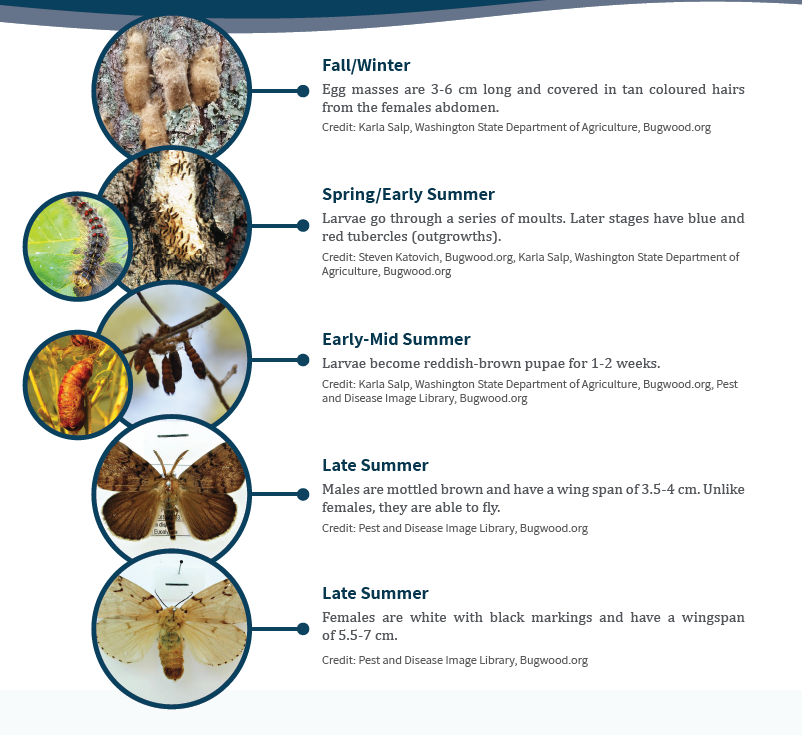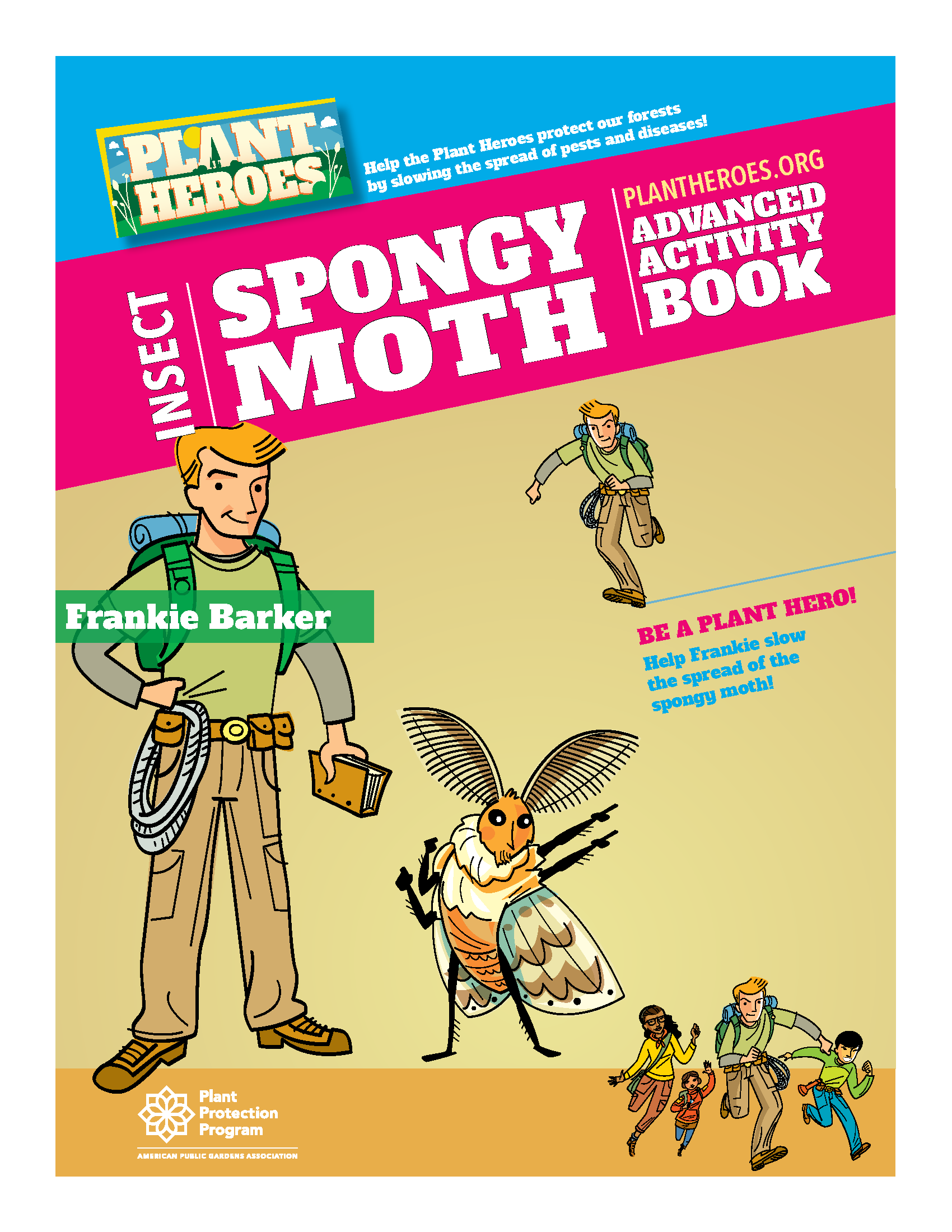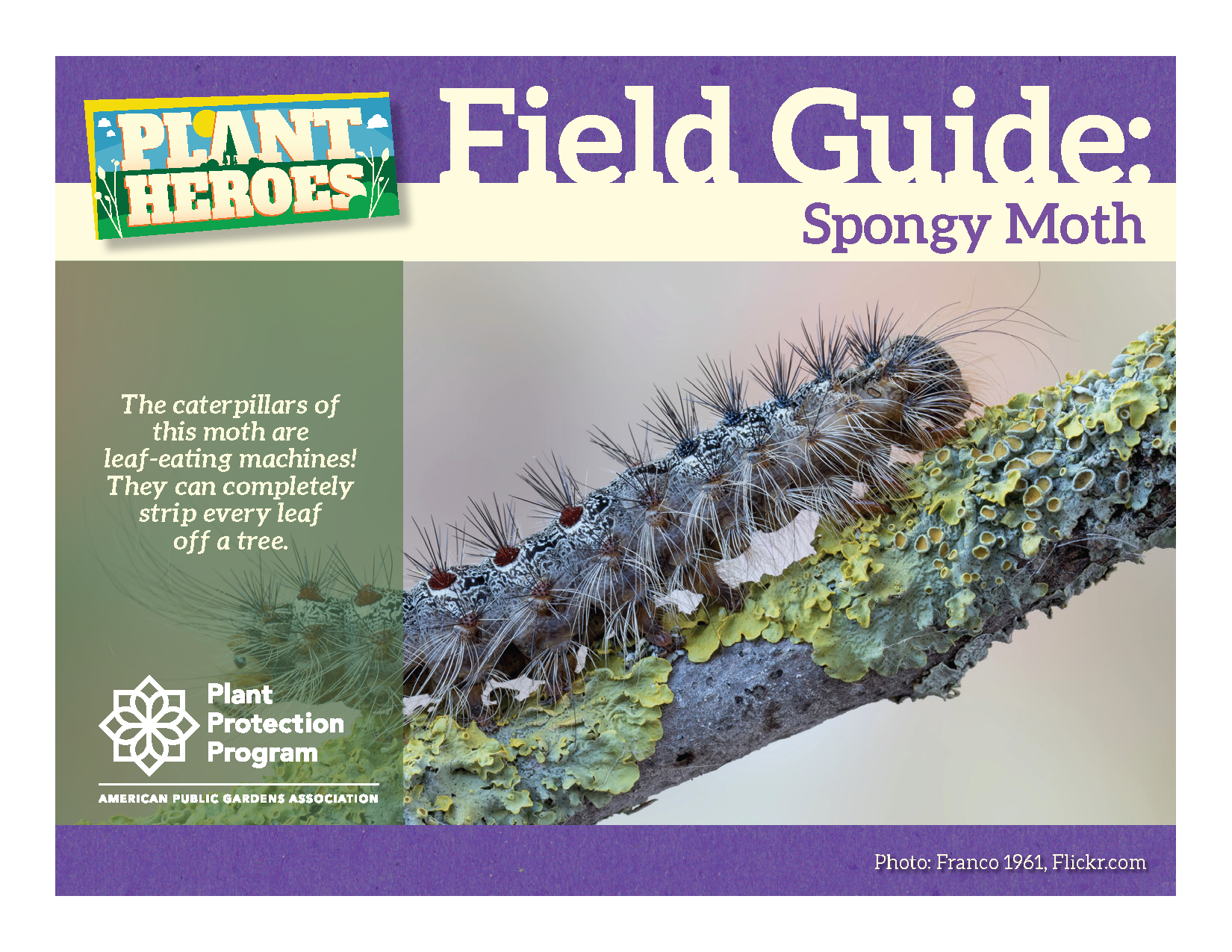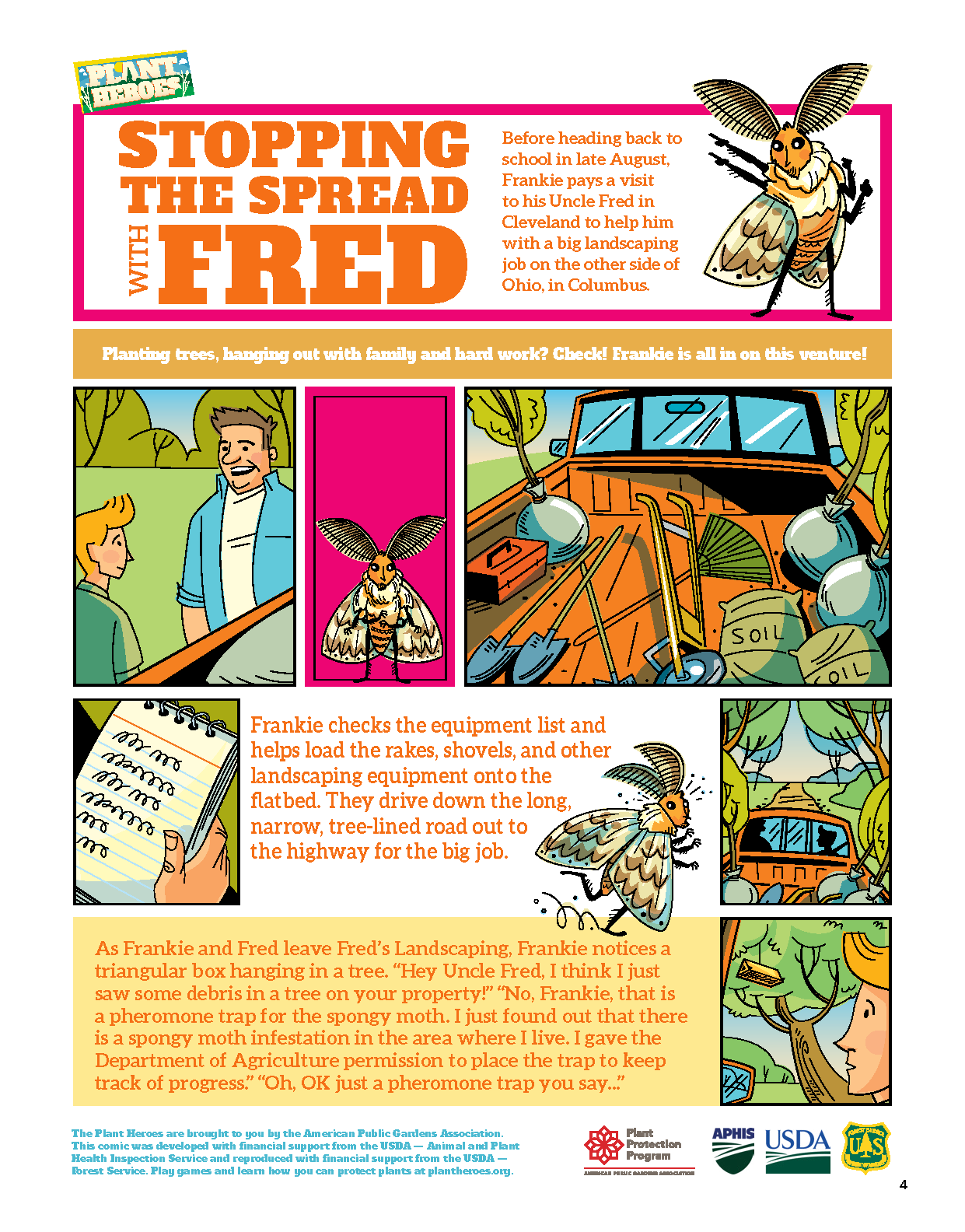One of my childhood memories involved killing the egg masses of spongy moths (Lymantria dispar) on the trees in my yard. Armed with a stick and a small bucket of hot, soapy water, I would scrape any egg masses I found into the bucket. The soapy water would prevent the eggs from hatching into hungry caterpillars. Spongy moths, formerly known as the European gypsy moths, are an invasive species. The caterpillars can defoliate a tree of its leaves; thus, weaking the tree and enabling other pests to kill it. During a major outbreak, they can cause millions of dollars in damage to our forests.
Get to Know Spongy Moths
Watch the video below to learn more about the life cycle of spongy moths and how to identify them.
The USDA National Invasive Species Information Center is another great resource to learn more about spongy moths and the work the USDA does to slow the spread of this invasive pest in the U.S.
A New Common Name
Are you confused by all the different common names for this moth? In 2022, the Entomological Society of America (ESA) adopted the common name of “spongy moth”. The new name refers to the spongy texture of the moth’s egg masses. This name change is part of the Better Common Names Project which seeks to change problematic common names. The ESA states that “this change was necessary because the word ‘gypsy’ is an ethnic slur and the former common name equated people with insects.”
Revised Spongy Moth Activity Books, Field Guide, and Comic
In accordance with our mission, we recently updated our educational resources to reflect the new name. Check out our revised activity books, field guide, and comic about the spongy moth. The revision was made in all three languages: English, Spanish, and simplified Chinese. These educational materials encourage learners to become plant heroes by learning about and preventing the spread of spongy moths in their own yards, neighborhoods, and communities.
Be a Plant Hero

Start by updating your educational resources with the new common name and use the new name in conversations. ESA’s Spongy Moth Transition Tool Kit is a helpful resource. When educating about spongy moths, have a discussion with learners about why the name change was important. Do they think the new name was a good choice for this moth? Why or why not?
Additionally, learn more about spongy moths, their life stages, and what you can do to help. Just like I did, you too can remove egg masses and place them in soapy water to reduce the numbers. Check out this Michigan State Extension Service article to discover more ways to slow the spread.
Written by: Jeanette M. Henderson, Plant Protection Program Coordinator



